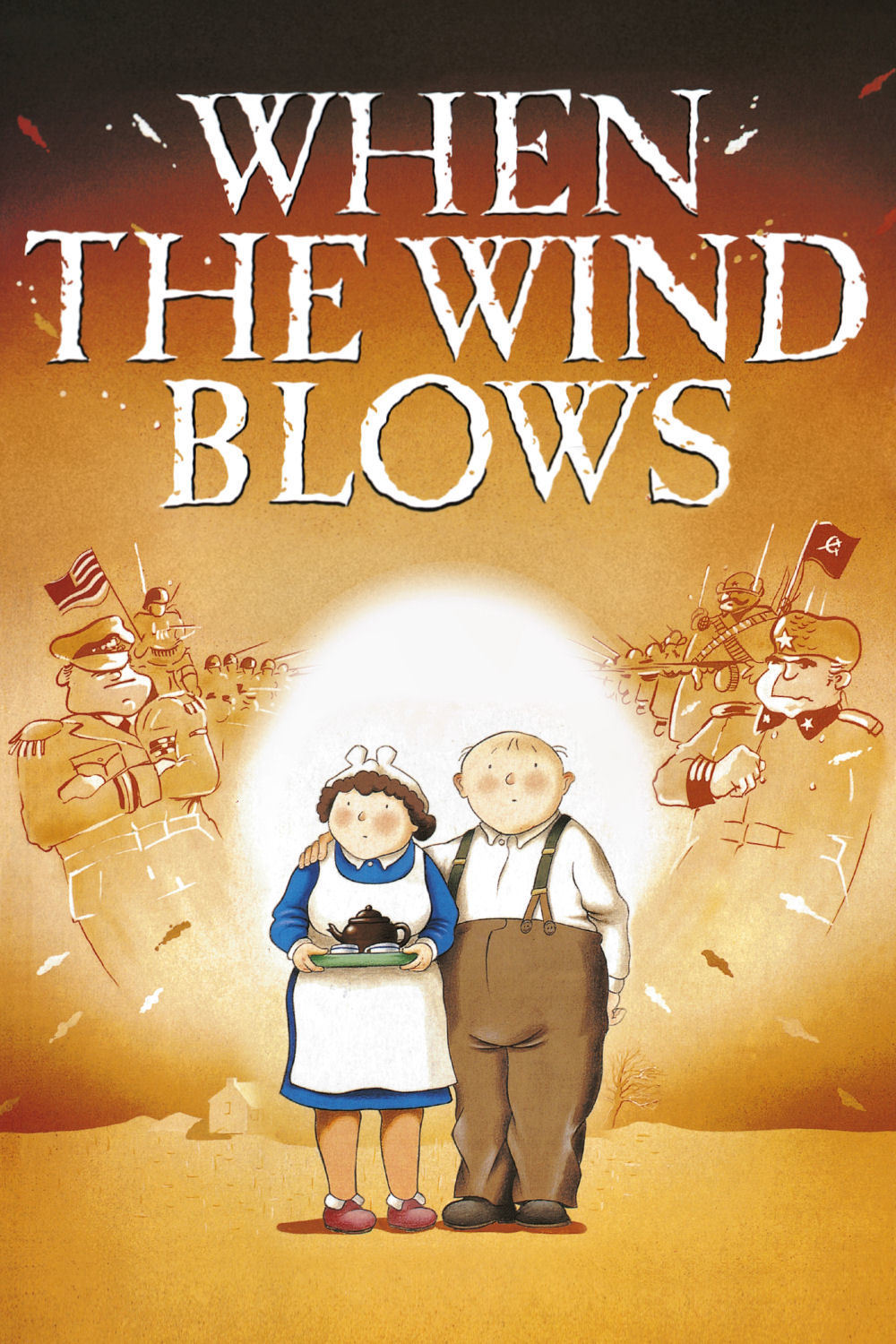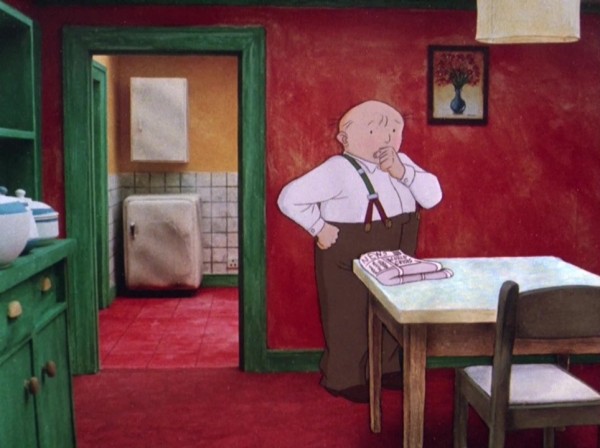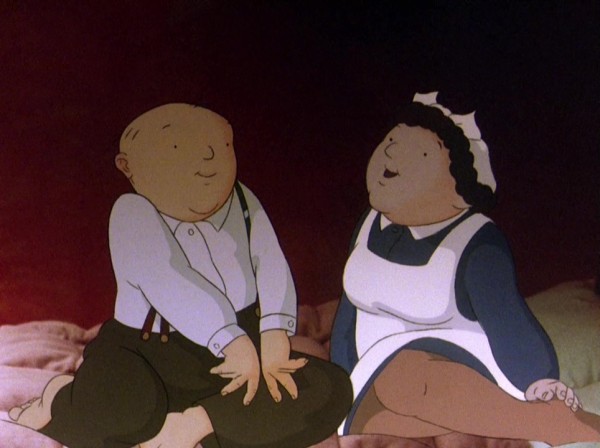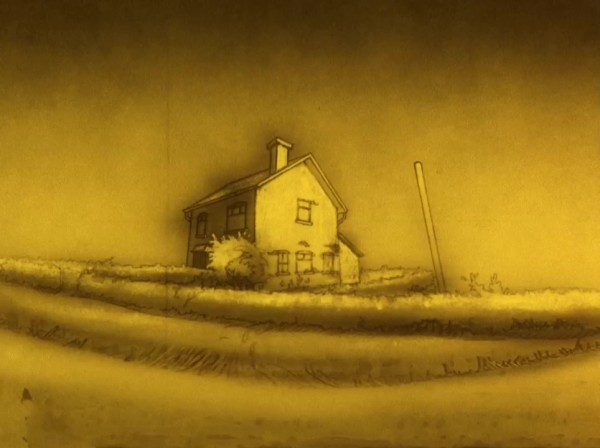
When the Wind Blows (1986)

THE TRAILER
No trailer can be found on Youtube, so here’s the opening credits.
THE DIRECTOR
Jimmy T. Murakami
THE ACTORS
John Mills (Jim Bloggs), Peggy Ashcroft (Hilda Bloggs)
THE CAUSE
Nuclear War/World War III
THE STORY
“When the Wind Blows tells how Jim and Hilda Bloggs, a typical English retired couple, deal with the approach of the nuclear bomb. Hilda, who thinks fallout is what you do in the army, is determined to get the washing in despite a three-minute warning. Jim, having lived through the World War II Blitz, has the Dunkirk spirit and starts collecting essential supplies, which includes two packets of ginger nuts, a tin of pineapple chunks, and endless cups of tea.” – VHS box synopsis.
THE RUNDOWN
Continuing November’s theme of extremely depressing animated movies centered on post-nuclear life, we have 1986’s When the Wind Blows. It concerns an old couple living in the English countryside as nuclear war approaches. As the situation deteriorates, Jim (the husband) decides to begin constructing a fallout shelter, consulting the famous Protect and Survive pamphlet from the 1970s. For the first half hour or so, this movie is a low-key comedy about a goofy old man ineffectually preparing for nuclear fallout while his long-suffering wife grudgingly goes along with it because it’s keeping him busy. But then, a bomb actually does fall and things get really rough.
I decided to write up When the Wind Blows after Barefoot Gen because I knew that the latter would disturb me and I thought a fictionalized story of dealing with life in a fallout zone would seem less real and offer me some modicum of escapism. I was incorrect. While Barefoot Gen is rather upsetting, disturbing, and incredibly sad there’s a thread of hope weaving through it. No matter what life throws at Gen, he rises above it and learns to find happiness in his own continued survival. While it didn’t feel like it at the time, Barefoot Gen is a rather optimistic movie and while Gen’s optimism comes across as uplifting (particularly knowing that his real life counterpart died an old man), the optimism of Jim and Hilda Bloggs comes off as ignorant and dumb.
Jim and Hilda were both children in World War II and their rose-tinted memories of that period have caused them to think that they have what it takes to weather a nuclear holocaust. The pamphlets which James consults with a fervor bordering on religion (he refers to his shelter as an “inner core or refuge” at all times rather than just “inner core” or “refuge” because that’s the way it’s written in the pamphlets) aren’t terribly informative on doing much more than surviving the explosions and waiting until somebody can arrive to help.
Even if the pamphlet was useful, Jim and Hilda are woefully unprepared. Their rations are laughably spare, their shelter offers no protection whatsoever from radiation, their entire water supply is contained in unsealed glass bottles sitting on their entryway floor. And when the bomb drops, things get far worse: Jim uses what few bottles of water remain unbroken to make tea, later he replenishes their drinking supply by collecting rainwater, Hilda asks Jim what fallout looks like and he tells her he thinks it looks like gray snow, Hilda comments that the air smells of roasted meat and Jim states that everyone must be having their Sunday dinners early, they expect to find out information about the nuclear attacks on the radio, the TV, or from the newspaper.

When the Wind Blows is a kindred spirit with Miracle Mile in that it focuses not on heads of state, survivalists, or soldiers. This is a movie about the poor bastards that don’t make it and those poor bastards are us, dear reader. I learned more about surviving nuclear fallout researching this review than I have in 27 years of life. It’s frustrating watching Jim and Hilda bungle things (though they’re pretty obviously doomed from the start) and you’ll want to yell at the Bloggses every time they hammer another nail into their own coffins. But much like Miracle Mile, the way of the characters is a fairly realistic interpretation of what would likely happen.
The Bloggses are downright adorable, supposedly based on the parents of Raymond Briggs (the author/illustrator of the comic from which this movie was adapted), and their slow and awful fates in this movie just feel especially needless and cruel. These two people are just relentlessly likable, even their stupidity is endearing, and it makes the war seem unjustifiable that it should effect people such as this harmless old couple. The other big message about the Bloggses that the movie conveys beyond simple ignorance is the blind faith which people pay their governments. Jim continuously expects that the UK government has the whole situation under control and rescue is only a day or two away. That everyone else is dead and unable to help he and his wife never occurs to him, making for some of possibly the blackest comedic moments I have ever seen on film.
While the movie does do a bang-up job of showing Joe and Jane Moviegoer how utterly worthless they would be in an actual nuclear event, it also tackles the way in which history tends to soften and romanticize past conflicts; particularly World War II. Jim and Hilda speak of The Blitz as though it were just a routine power outage where the family eats out of cans and sings songs by candlelight for a couple of days. They treat the Nazis (whom they keep mixing up with current enemy the Soviets) as though they’re little more than Saturday morning cartoon villains. They expect nuclear war to be trying, but easy to overcome with a stiff upper lip and a can-do spirit because that’s what they think it took in “their” war.

The art style of When the Wind Blows is simplistic and cartoonish, making the characters look like they belong in a surprisingly dark (and much better animated) episode of Caillou. But while the Bloggses and anything they’re holding is rendered in traditional hand-drawn animation, their home and any static objects are a sort of doll-house like set (likely a reference to the Protect & Survive television PSAs based on the pamphlets) that is rendered with stop-motion animation. However there are various dream sequences and the actual bombing itself which are rendered in a more hyper-realistic sketch style, and that’s not to mention the actual footage of an evacuation used over the opening credits or the photos of people from World War II used during Jim and Hilda’s reminisces.
With the exception of Rock & Rule, I cannot think of any other movie with more of a hodgepodge of animation styles. The disparate styles should clash, but they work together quite well for the most part to establish a general sense of unease that only grows as the movie progresses. This uneasy feeling is assisted by a haunting score by Roger Waters, though David Bowie’s titular song seems a bit out of place.
I’m on the fence on whether I consider When the Wind Blows a forgotten gem or a fascinating oddity. It’s a movie that’s somehow both memorable and forgettable, but it is affecting and it manages to bring across a powerful message in a devastating way. Miracle Mile it isn’t, but When the Wind Blows is a more than worthwhile watch.
THE SHILL
You can get this on as a manufacture-on-demand DVD from Amazon or get a surprisingly decently priced Blu-Ray from Twilight Time.
NEXT TIME ON DOOMSDAY REELS
“I find your lack of faith disturbing.”

Discuss this and other Doomsday Reels columns in the forum.